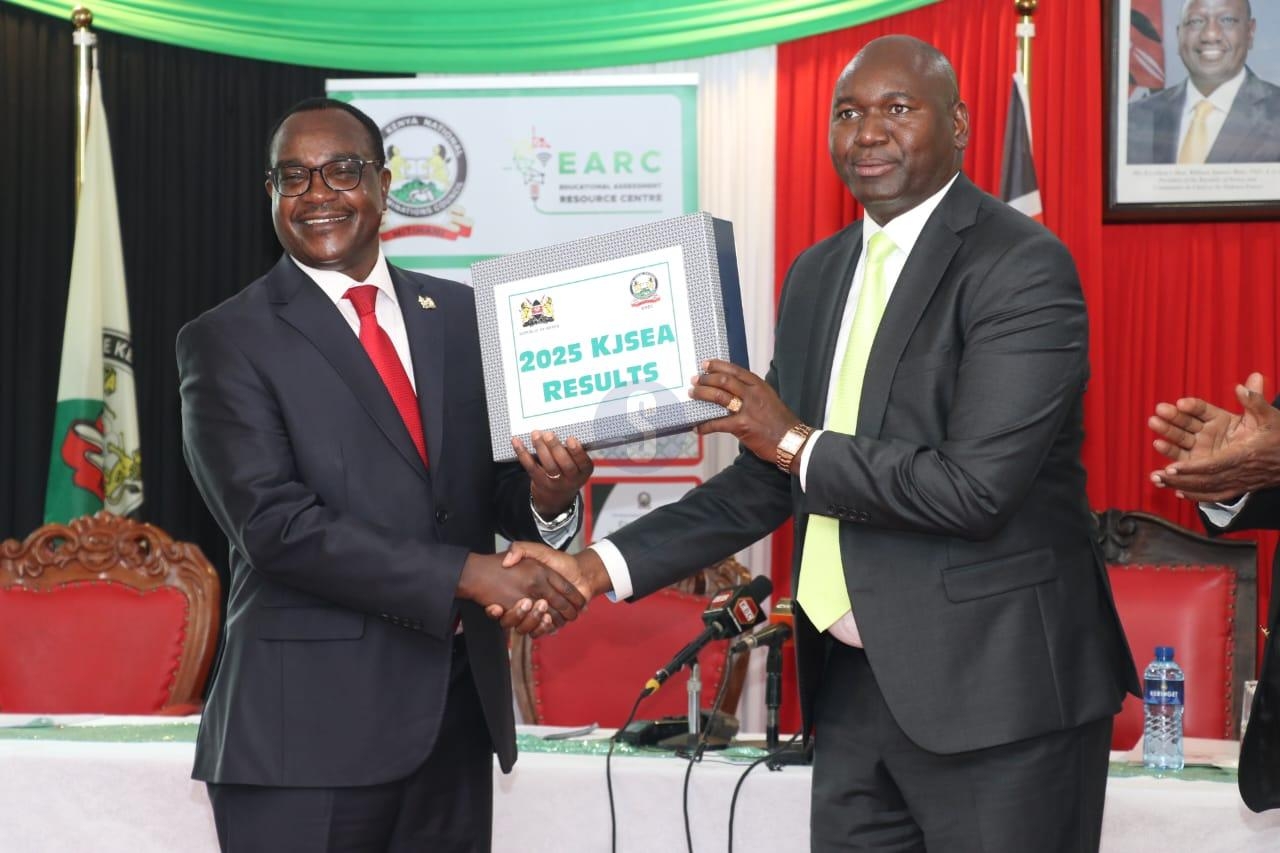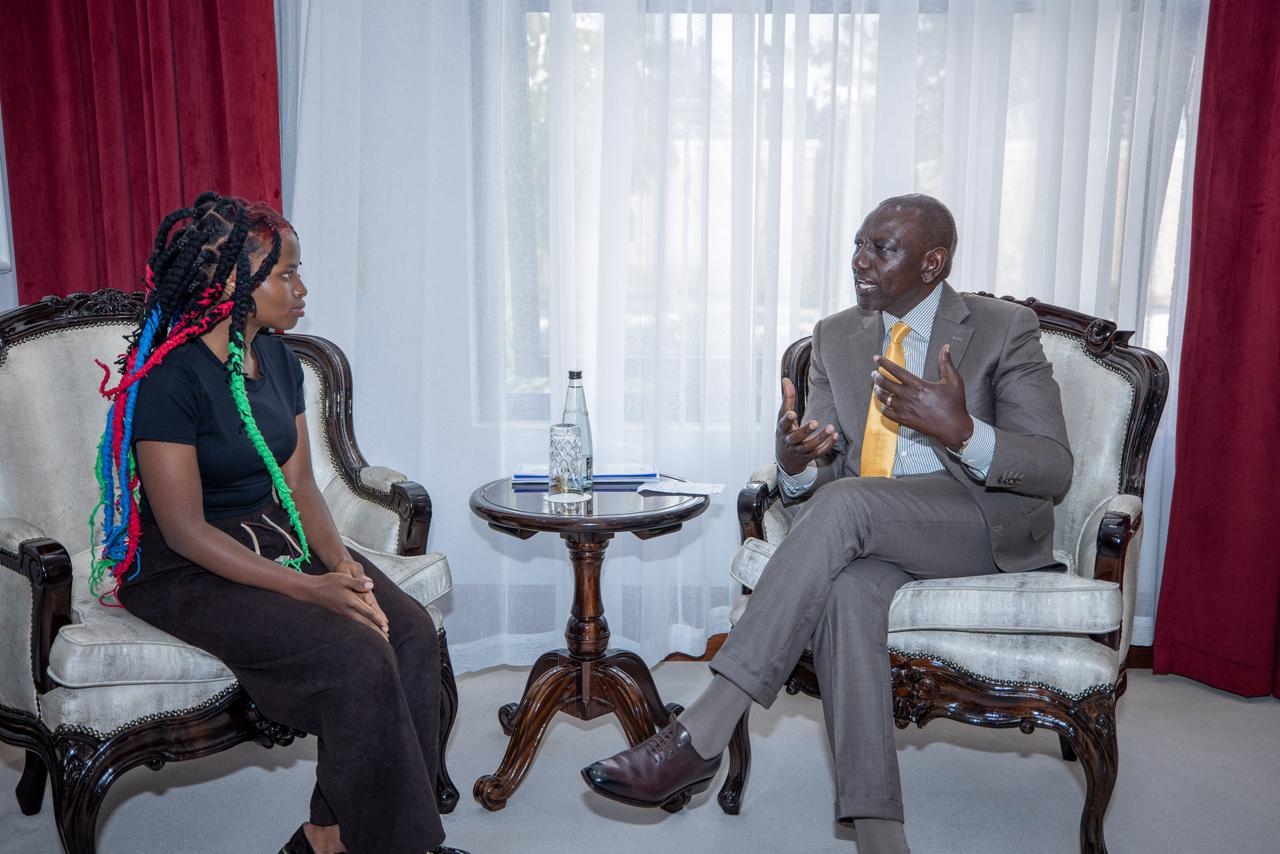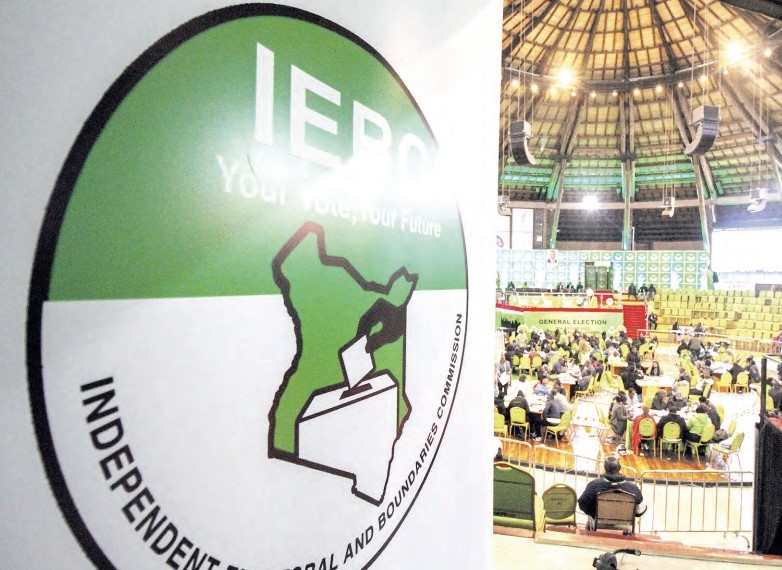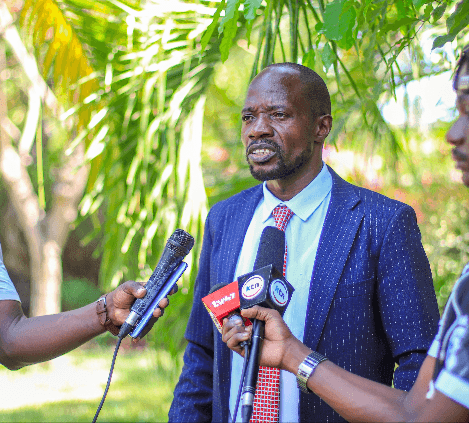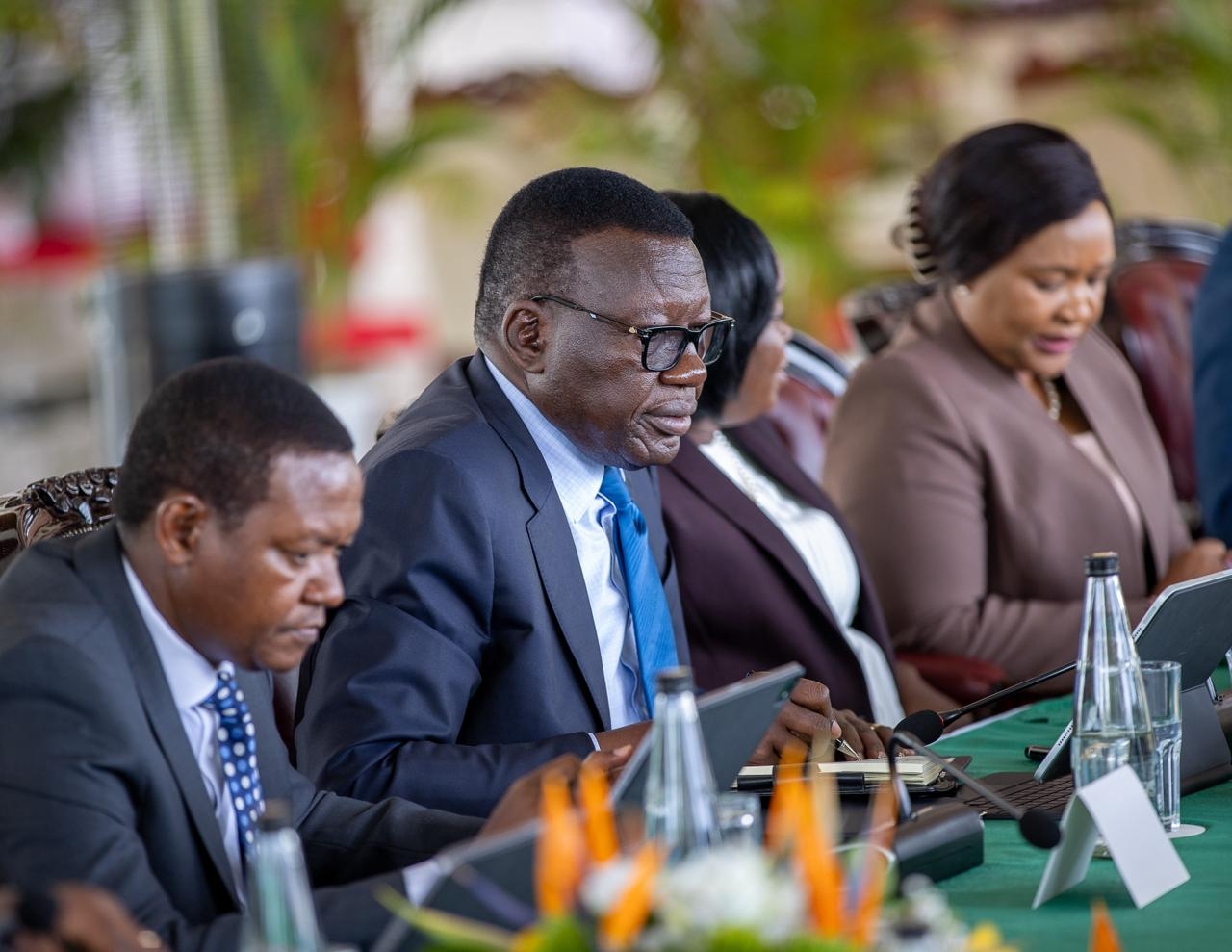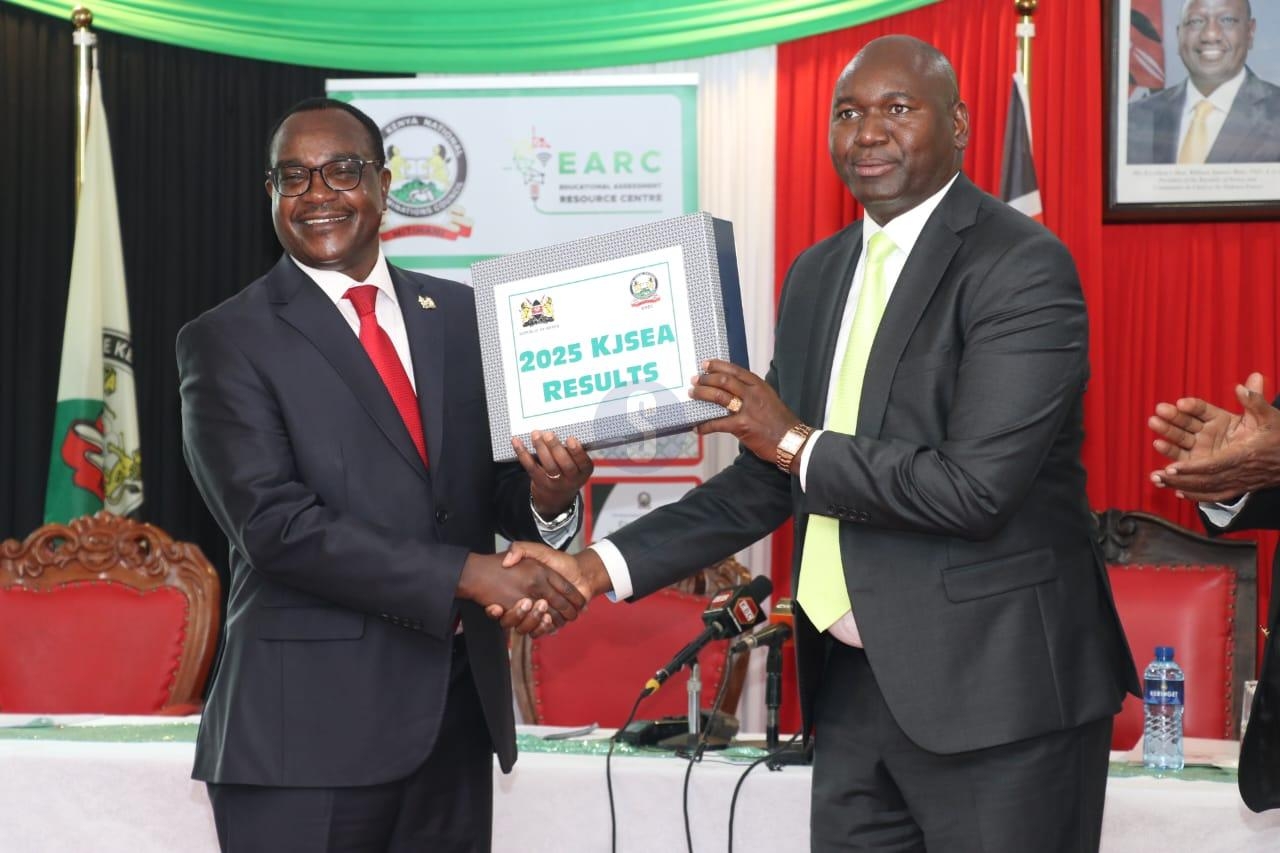
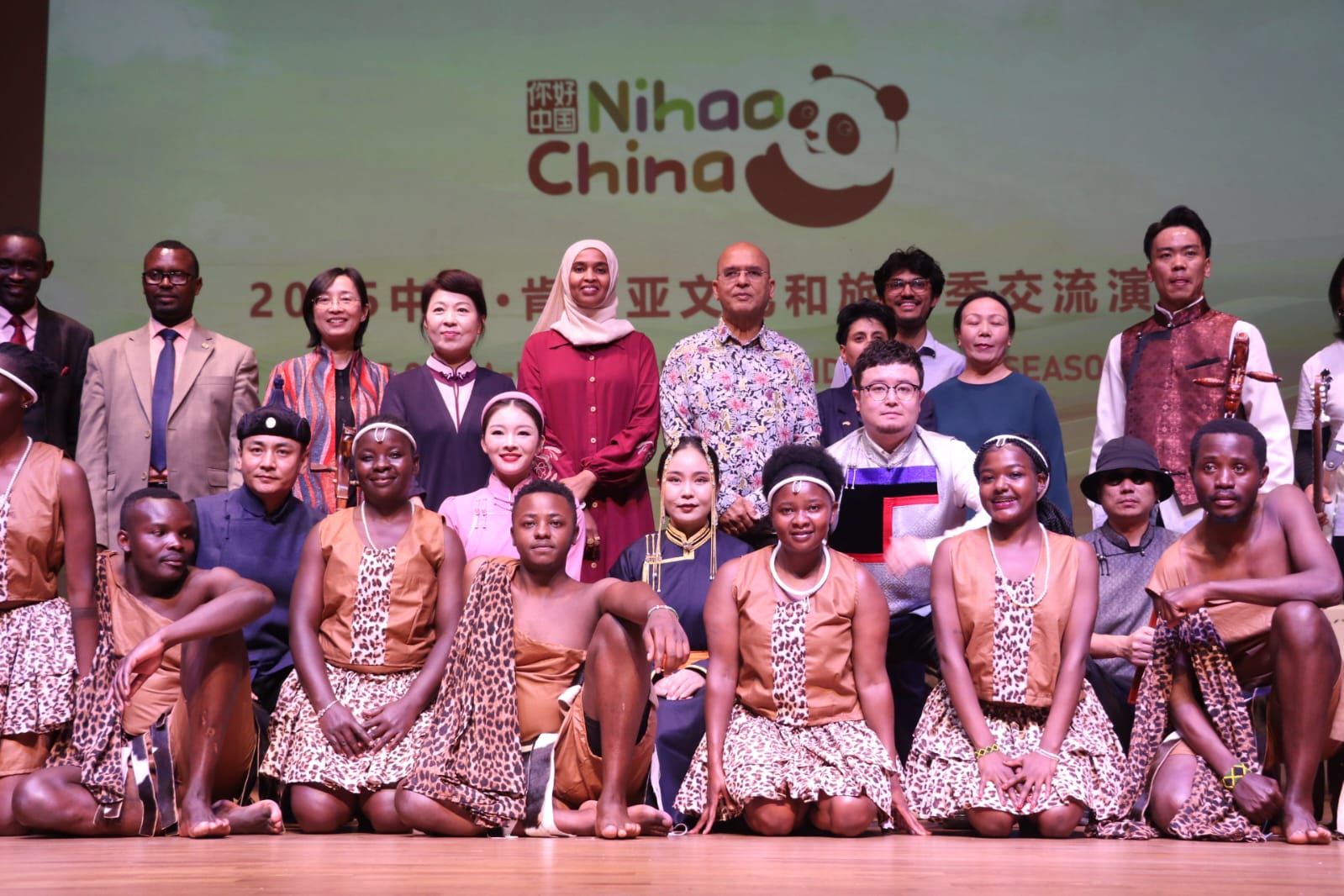 Chinese to Kenya ambassador Guo Haiyan (third left), Culture, Arts & Heritage Principal Secretary Ummi Bashir(fifth left) join performers for a group photo during the special performance of 'Singing tour of inner Mongalia' at Kenya National Theatre, Nairobi on July 17, 2025/LEAH MUKANGAI
Chinese to Kenya ambassador Guo Haiyan (third left), Culture, Arts & Heritage Principal Secretary Ummi Bashir(fifth left) join performers for a group photo during the special performance of 'Singing tour of inner Mongalia' at Kenya National Theatre, Nairobi on July 17, 2025/LEAH MUKANGAIThe Kenya National Theatre was on Thursday transformed into a spectacle of colour, rhythm, and culture as the 2025 China-Kenya Culture and Tourism Season Exchange lit up the stage with music, dance, and cross-cultural celebration.
The event, held just a month after the commemoration of 40 years of China-Kenya diplomatic and cultural relations, showcased the nations' growing bond through vibrant, tradition-infused performances.
It was graced by Chinese Ambassador Guo Haiyan, Gender Principal Secretary Ummi Bashir, and Kisumu East MP Shakeel Shabbir.
The one-hour event featured joint performances by Chinese and Kenyan youth, offering the audience a rich blend of both cultures.
Opening the show was Hateriya, a joyful Kenyan piece that celebrates youth and unity.
The performance depicts young men and women coming together to sing and dance around a bonfire, inviting one another to join in the festive spirit.
Next was The Song of the Horseman, a Chinese love ballad filled with energy and emotion.
It tells the story of a man chasing after a smiling girl across the grasslands on horseback, hoping to win her heart.
This was followed by Galloping Horse, a fast-paced Mongolian song that celebrates the pride and spirit of horses, a treasured symbol among Mongolian people.
In The Twelve Zodiacs, performers brought the Chinese animals to life, using simple lyrics and playful movements to show the unique traits of each animal.
Ten Thousand Horses Galloping featured a passionate solo on the morin khuur, the traditional horsehead fiddle, with music that vividly mimicked the sound and strength of galloping horses.
The mood then calmed with The First Snow, a soft and sweet tune that brought back memories of first love while watching snow fall outside a window.
Then came The Drinking Song, a lively and humorous number celebrating friendship and festive cheer, encouraging all to drink responsibly and sing joyfully together.
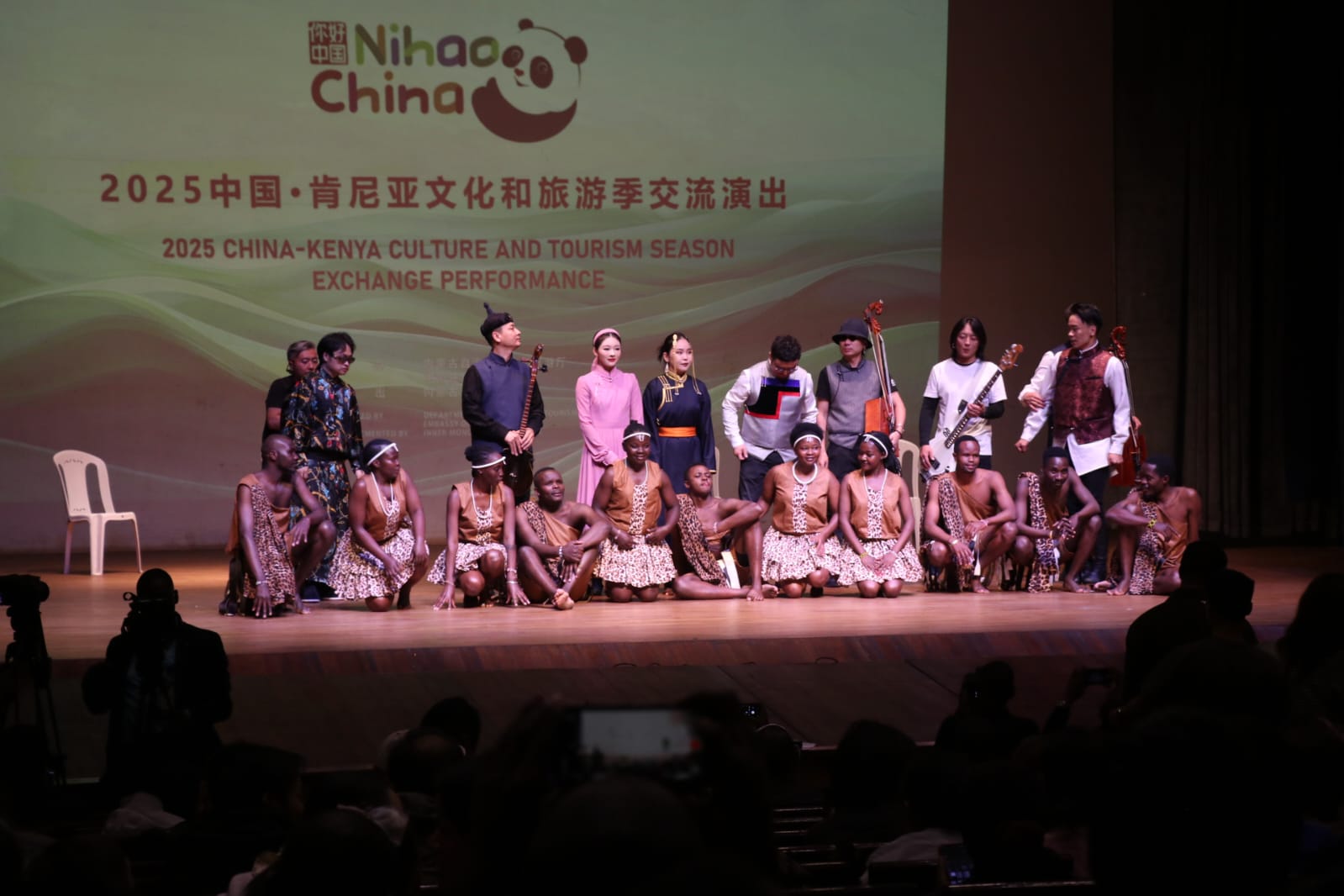 Chinese and Kenyan youth pose for a photo after a performing the 'Singing tour of inner Mongalia' at Kenya National Theatre, Nairobi on July 17, 2025/LEAH MUKANGAI
Chinese and Kenyan youth pose for a photo after a performing the 'Singing tour of inner Mongalia' at Kenya National Theatre, Nairobi on July 17, 2025/LEAH MUKANGAIDairilacha brought laughter and energy to the stage with a clever Mongolian question-and-answer performance, combining history, culture, and wit.
Spring painted a bright scene of nature coming back to life after winter, capturing the Mongolian people’s love for life and gratitude to the land.
Auspiciousness blended soft fiddle music with upbeat rhythms to express hopes for peace, good weather, and prosperity among herding communities.
The Wind in the Sky was a touching song from the Horqin region, encouraging people to cherish life’s beautiful moments and chase their dreams with hope.
The audience was then treated to a rare Khoomei (throat singing) demonstration, showcasing three distinct vocal styles that created both high and low tones simultaneously—a highlight of the night.
In The Mountain Top, the stage became a scene of quiet longing, as a rider waits to meet a loved one under the evening sky.
Heimuri, a three-part musical piece, took listeners on a journey across the Mongolian plains, celebrating the heroic spirit of the black steed.
The show ended with a graceful male-female fuet dance, symbolising cultural harmony and mutual respect.
Addressing the press after the event, Shabbir praised the cultural exchange not only for its artistic value but its political symbolism.
"We have been active as Members of Parliament in fostering direct ties with our counterparts in the Communist Party of China,” he said.
"This relationship is not new, it dates back to the early 1960s. China was among the first nations to recognize our independence, and many of our freedom fighters engaged with the Chinese during the struggle.”
He emphasised the need to push back against what he called “misinformation and propaganda,” particularly from some Western narratives that cast doubt on Kenya’s partnership with China.
He also welcomed the Mongolian performers warmly, referring to them as “cousins, not in the political sense, but in the cultural one,” and celebrated the moment when Kenyan dancers joined their Chinese counterparts on stage.
"It showed that while our cultures are different, they are also beautifully compatible,” he said.



